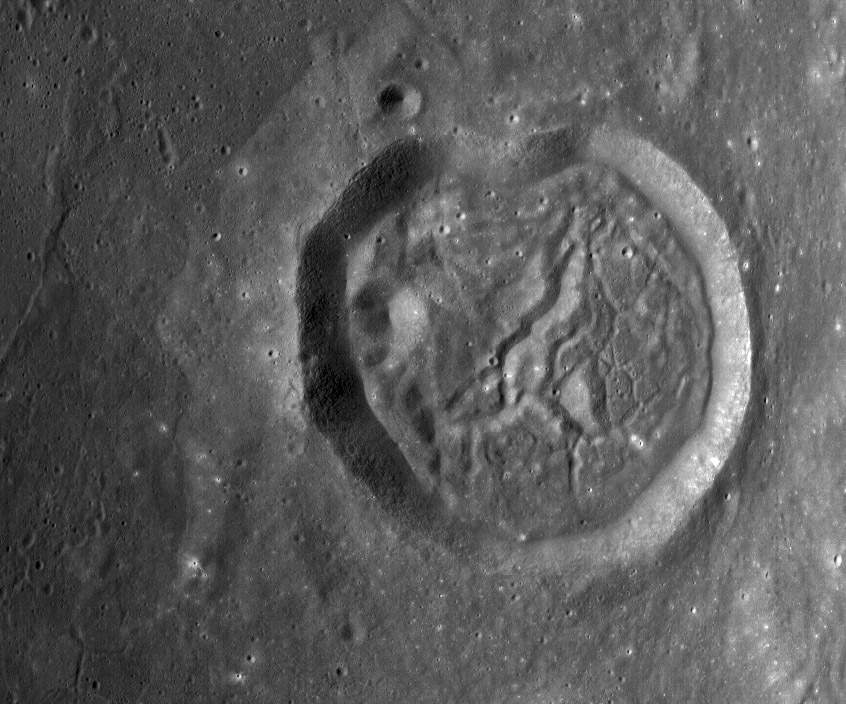Difference between revisions of "October 31, 2010"
| (4 intermediate revisions by the same user not shown) | |||
| Line 1: | Line 1: | ||
__NOTOC__ | __NOTOC__ | ||
=Lapping Lava= | =Lapping Lava= | ||
| + | <!-- Start of content --> | ||
<!-- ws:start:WikiTextHeadingRule:1:<h1> --> | <!-- ws:start:WikiTextHeadingRule:1:<h1> --> | ||
<!-- ws:start:WikiTextLocalImageRule:16:<img src="/file/view/LPOD-Oct31-10.jpg/175025307/LPOD-Oct31-10.jpg" alt="" title="" /> -->[[File:LPOD-Oct31-10.jpg|LPOD-Oct31-10.jpg]]<!-- ws:end:WikiTextLocalImageRule:16 --><br /> | <!-- ws:start:WikiTextLocalImageRule:16:<img src="/file/view/LPOD-Oct31-10.jpg/175025307/LPOD-Oct31-10.jpg" alt="" title="" /> -->[[File:LPOD-Oct31-10.jpg|LPOD-Oct31-10.jpg]]<!-- ws:end:WikiTextLocalImageRule:16 --><br /> | ||
| − | <em>WAC image M119591069ME processed by [mailto:revans_01420@yahoo.com | + | <em>WAC image M119591069ME processed by [mailto:revans_01420@yahoo.com Richard Evans]</em><br /> |
<br /> | <br /> | ||
| − | Bohnenberger looks like it was baked with too much yeast. Its floor is raised up and fractured just as bread sometimes is. The floor presumably formed with bulges of slumped wall debris and a small central peak, but that has been strongly modified. Spectral [http://www.lpi.usra.edu/meetings/lpsc97/pdf/1526.PDF | + | Bohnenberger looks like it was baked with too much yeast. Its floor is raised up and fractured just as bread sometimes is. The floor presumably formed with bulges of slumped wall debris and a small central peak, but that has been strongly modified. Spectral [http://www.lpi.usra.edu/meetings/lpsc97/pdf/1526.PDF studies] show that the floor material is highland rocks, so it is uplifted basement of the Nectaris basin, not convoluted volcanics. Interesting volcanics are just to the west, however. The dark basaltic lavas of Mare Nectaris lap up against the base of Bohnenberger. Seldom do we see such a sharp boundary between lava and pre-existing terrain, and it is fascinating how the lava flowed around minor elevations and filled small depressions. The mare-crater boundary is clear in a Clementine iron [http://www.mapaplanet.org/explorer-bin/explorer.cgi?map=Moon&layers=moon_clem_feo_color&west=33.63&south=-18.83&east=44.88&north=-13.20&center_lat=0&center=39.255&defaultcenter=on&grid=none&stretch=auto&projection=SIMP&advoption=NO&info=NO&resolution=64 map], but is actually much more sharply defined that the Clementine view would suggest. <br /> |
<br /> | <br /> | ||
| − | <em>[mailto:tychocrater@yahoo.com | + | <em>[mailto:tychocrater@yahoo.com Chuck Wood]</em><br /> |
<br /> | <br /> | ||
<strong>Related Links</strong><br /> | <strong>Related Links</strong><br /> | ||
| − | Rükl plate [ | + | Rükl plate [https://the-moon.us/wiki/R%C3%BCkl_58 58]<br /> |
<br /> | <br /> | ||
<hr /> | <hr /> | ||
| − | < | + | <table class="wiki_table"> |
| − | </ | + | <tr> |
| − | - | + | <td><!-- ws:start:WikiTextMediaRule:0:<img src="http://www.wikispaces.com/site/embedthumbnail/custom/4814793?h=0&w=0" class="WikiMedia WikiMediaCustom" id="wikitext@@media@@type=&quot;custom&quot; key=&quot;4814793&quot;" title="Custom Media"/> --><!-- ws:end:WikiTextMediaRule:0 --><br /> |
| − | + | </td> | |
| − | + | <p><b>Yesterday's LPOD:</b> [[October 30, 2010|Arm-Waving]] </p> | |
| + | <p><b>Tomorrow's LPOD:</b> [[November 1, 2010|Remnant Oldness]] </p> | ||
| + | <!-- End of content --> | ||
| + | {{wiki/ArticleFooter}} | ||
Latest revision as of 18:56, 13 October 2018
Lapping Lava

WAC image M119591069ME processed by Richard Evans
Bohnenberger looks like it was baked with too much yeast. Its floor is raised up and fractured just as bread sometimes is. The floor presumably formed with bulges of slumped wall debris and a small central peak, but that has been strongly modified. Spectral studies show that the floor material is highland rocks, so it is uplifted basement of the Nectaris basin, not convoluted volcanics. Interesting volcanics are just to the west, however. The dark basaltic lavas of Mare Nectaris lap up against the base of Bohnenberger. Seldom do we see such a sharp boundary between lava and pre-existing terrain, and it is fascinating how the lava flowed around minor elevations and filled small depressions. The mare-crater boundary is clear in a Clementine iron map, but is actually much more sharply defined that the Clementine view would suggest.
Chuck Wood
Related Links
Rükl plate 58
Yesterday's LPOD: Arm-Waving
Tomorrow's LPOD: Remnant Oldness
COMMENTS?
Register, Log in, and join in the comments.



